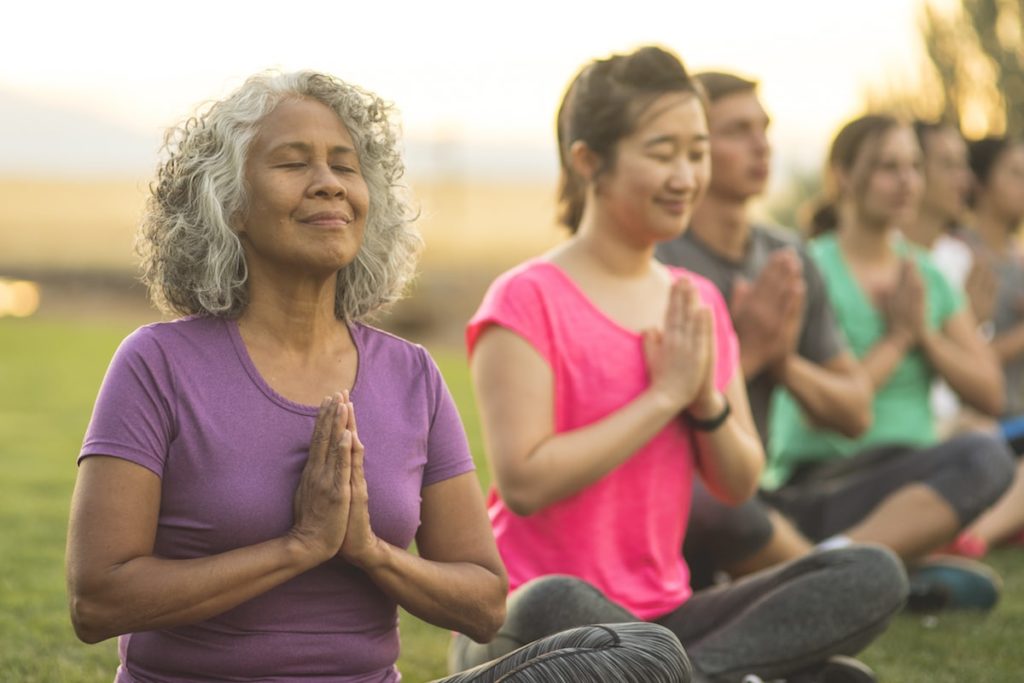Five People Walk Into a Fitness Facility . . .
Understanding key archetypes will help your staff meet the needs of all your members more effectively.
Welcome to part two of our five-part “Crash Course in Excellence” with takeaway strategies. These practical methods will help you and your staff rise, like cream, to the top of your craft.
In this second installment, let’s envisage five individuals who might turn up in any class or “experience” that you and your staff members teach or create. To be sure, the following people will not really appear in every personal training session or group fitness class you offer, but having conscious awareness of these imaginary attendees will dramatically enhance your service and teaching skills. Share these tips with your staff at the next meeting and watch as retention and customer satisfaction grow.
Tip #1: Make Regressions for “Mom”
Imagine that your mother, or a motherlike figure, takes every class. When I think of my mother visiting a class or observing a training session, I make values such as safety and cleanliness paramount. I also envision a participant who is eager, positive and enthusiastic, but who may be slightly overweight and have a few body issues like weak wrists, knees, hips and abdominals. Ultimately, I want her both to understand and to be able to adapt all movements so she can feel successful. When you imagine a motherlike figure in each class and offer modifications, the likelihood of someone saying “That was way too hard for me—I can’t come back” diminishes dramatically.
Takeaway: This mother figure serves as a metaphor for the person who needs regressions and movements that make exercise patterns more accessible and easier to follow.
Tip #2: Make Progressions for “The Athlete”
In every class or session, imagine that an athlete is attending. This will keep you and your staff on alert and ensure that no one ever leaves saying, “That was too easy for me.” Why? Because of intensity progressions. Begin with a moderate level of difficulty that the majority of participants can do, and then offer regressions as outlined in the previous section. When appropriate, progressions will not only be effective for those wishing to push themselves; they will also function as “teasers” to give others a goal to work toward.
Takeaway: When offering progressions, add direction, change the rhythm, add a movement plane, change the lever length, make a movement unstable or add plyometrics.
Tip #3: Imagine the Deaf Student
Let’s say someone who cannot hear (or does not speak your language) has walked into your facility. When words are unreliable, you must convey movement visually and use expressions, gestures and visual cues. Offer instructional cues that affect safety, alignment, execution, motivation and modifications, all without words. Be so precise and specific in your corrections and tips that your deaf participant will grasp your intentions from your expressive body language. An added bonus: the instructor with excellent visual communication skills will perform well during audiovisual mishaps (e.g., when a microphone goes missing) and will also be able to reach those in class who do not have a fluent command of the language.
Takeaway: To develop excellent visual directional cuing skills, practice pointing in the appropriate direction every time you say “right,” “left,” “front” and “back.” For visual instructional cues, whenever naming a muscle, touch that muscle on your body so that visual learners make the connection. A “thumbs-up” sign is a visual motivational cue. Holding a fist in front of the abdominal area is a visual safety cue that indicates core control, reminding everyone to contract the transversus abdominis.
Tip #4: Imagine the Blind Student
Imagine that someone who cannot see attends every class or personal training session in your facility. When you think of someone who cannot see, you quickly drop nonspecific cues from your repertoire. Cues like “Good job, Jay” and “If that’s too hard, do it this way” are nonspecific because the blind person (and, consequently, the auditory learner) cannot easily follow them. Instead, use words, corrections and tips so precisely that this individual will still follow every syllable. Transfer this verbal precision to instructional cues that affect safety, alignment, execution, motivation and modifications. Occasionally, stand or sit in place and simply cue with words. If communication is defined as “the response you get regardless of your intention,” you will immediately learn how well you cue verbally.
The instructor with excellent verbal cuing skills will be comfortable in situations where the lights go off, or when participants are in downward-facing dog without visual access to the teacher, because everyone will still be able to follow precise verbal cuing.
Takeaway: When cuing, occasionally close your eyes to recruit more specific words without relying on the aid of vision. Practice cuing movement to friends without using any body language while they keep their eyes closed. Your cuing will become more succinct, powerful and direct. Furthermore, when you offer feedback, instead of saying “Good job,” describe more specifically what merits an accolade. For example, say, “Your posture is perfect, Sherry,” or “I like the way you are exhaling forcefully on the effort, Tim.”
Tip #5: Imagine That CNN Headline News Is Coming
If you knew that a crew from CNN was coming to film a class at your facility and then interview you, you might find yourself interested in preparing every aspect of the experience, from minor to major details. Imagine that a reporter contacted you the night before a class and said, “We hear that you are doing amazing things with people and movement. Tomorrow, we are bringing a film crew. When we interview you after the class, we will ask you three questions: (1) “Why you (or your employee)?” (2) “Why this particular format?” and (3) “Why now (i.e., why is now—and not last year or next year—the perfect time to offer this experience?).”
The value in thinking about CNN Headline News attending your class is that you will think about details—the special factors that make a cream experience. These are factors which, most probably, the competition does not take into consideration.
Takeaway: Consider the details of the kinesthetic aspects of communication that address feeling, including
- matching lyrics to the theme and feel of class;
- laying out the equipment in advance with attention to the overall layout;
- dressing appropriately to match the mood and feel of class;
- adjusting the lighting and temperature;
- choosing aromatherapy for the class (if appropriate); and
- considering additional little touches you can create to make everyone feel welcome and anticipated.
When managing, teaching and training, imagine the “fabulous five”: a motherlike figure (to make excellent regressions); an elite athlete (to make effective progressions); a blind student (to hone verbal cuing skills); a deaf student (to hone visual cuing skills); and a CNN news reporter (to consider kinesthetic details). Each metaphor represents a different type of cuing, which, in turn, helps you and your staff become better communicators.
In the next column, we’ll look at the value of bilateral evaluations for group fitness and personal training.
Lawrence Biscontini, MA
Lawrence Biscontini, MA, has made fitness history as a mindful movement specialist, winning awards that include the Inner IDEA Visionary Award. He is a philanthropist, presenter, keynoter, and course development specialist for various companies, including ACE, AFAA, FIT and NASM. He also serves on the advisory boards for the International Council on Active Aging and Power Music®, and is an International Spa Association reporter-in-the-field for its #ISPAInterviews series. Lawrence teaches with yoga RYT 500 and decades-long certification experience. His company, Fitness Group 2000 offers scholarships to professional conferences and competitions on several continents. Lawrence runs fit camps in Puerto Rico in the winter months and has authored more than a dozen books.






